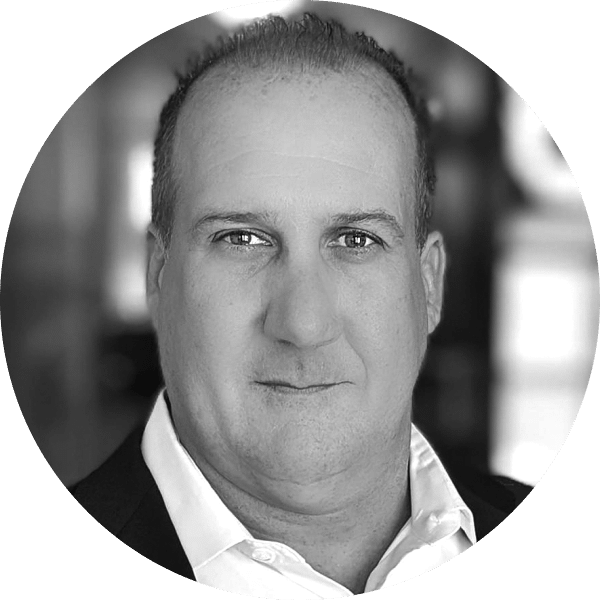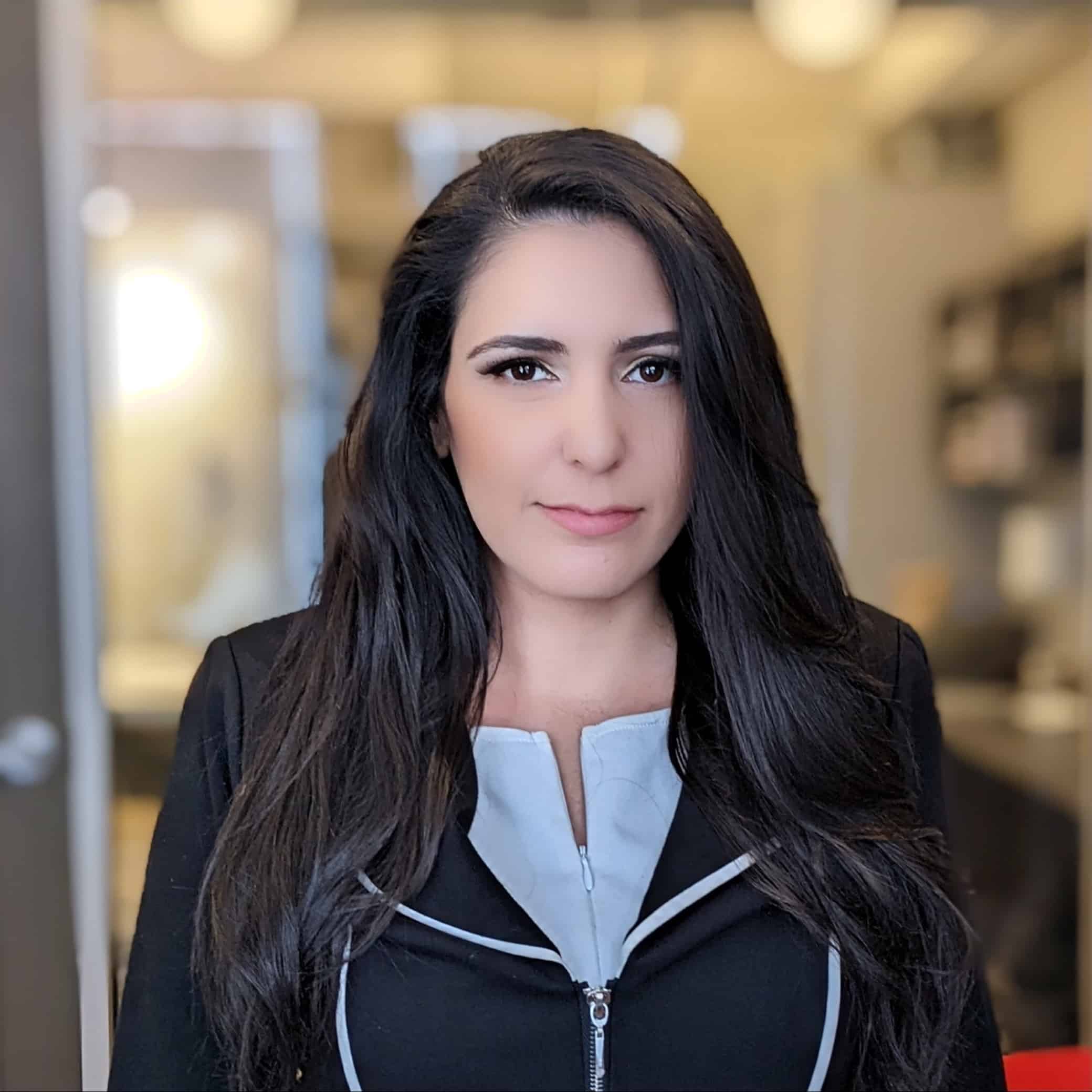Harnessing AI & Tech For Next-Level Marketing
Derick Schaefer
Senior Vice President of Technology at Mod Op

In this episode, Tessa Burg and Derick Schaefer discuss the rapid evolution of AI in marketing. You’ll get an inside look at the challenges companies face when they blindly adopt AI—emphasizing the need for a solid AI strategy backed by clear business metrics.
“AI isn’t about the tech; it’s about the outcomes for your business.”
The conversation goes deeper, covering organizational culture shifts, the pivotal role of change management and how employees can become the catalyst for innovation. They also spotlight the importance of establishing a baseline to properly measure AI effectiveness and contribution to growth.
Whether you’re a marketing leader, tech enthusiast or a curious mind, this episode is a must-listen. Tune in to enhance your understanding and approach to AI, machine learning and business strategy.
Highlights From This Episode:
- AI and ML in marketing
- Effective AI adoption
- Challenges in AI implementation
- Company Culture and innovation
- Organizational change management for AI
- Data and system requirements for AI
- Employee skills and engagement in AI
Watch the Live Recording
Tessa Burg: Hello, and welcome to another episode of Leader Generation, brought to you by Mod Op. I’m your host, Tessa Burg, and today I am joined by Derick Schaefer, the SVP of technology here at Mod Op Strategic Consulting. Derick, thank you so much for joining us!
Derick Schaefer: Tessa, thank you for having me.
Tessa Burg: So today we’re gonna talk about AI, machine learning effectiveness, but before we dive into the conversation I’d love to hear a little bit more about your background and what brought you to Mod Op Strategic Consulting.
Derick Schaefer: Yeah, sure, so I’m a career technologist. I’ve had the fortune of having a multi-decade career that has spanned through a number of companies that’re focused in enterprise and B2B technology solutions. Prior to coming to Mod Op, I served as the chief technology officer for Trintech in the Office of Finance Space, which is a SaaS solution provider. Also served as the SVP of engineering and cybersecurity and compliance for an online banking platform based out of Silicon Valley called Digital Insight. Prior to that, my experience in the marketing space formed a startup in the content marketing space that went through multiple asset mergers, and it ended up being divested to WP Engine based out of Austin, Texas, which was an exciting time. And I got my start with a 10-year career at Microsoft, where I worked in a number of business units and eventually worked my way into a leadership role. In addition to the daytime job, if you would, I also serve as a advisor on the advisory council of a small startup in the cognitive AI space called CogniSwitch, which, we’re actually doing some fun stuff at Mod Op Strategic Consulting with. Came to you guys as a part of the dPrism acquisition, and everything come full circle. Our chief strategy officer, Jonathan Murray, I actually worked for him for three years at Microsoft, which is nice to be back and working with him again.
Tessa Burg: Yeah, I know, we’re very glad to have, you know, really your level of experience and expertise here at Mod Op, especially at a time when AI and ML is not only, you know, one year in the making, like, we’re one year out from ChatGTP and it becoming something that we talk about on a daily basis, but going into 2024, fundamentally changing how we market, how we communicate, and how we engage with our customers. So I’m very excited to hear from you and help our listeners better understand how do they get the most out of the AI and ML that they’re using today. Derick, tell us when you’ve seen AI and ML adoption work, especially through your deep experience across many different types of companies that have leveraged data to core to their business and when have you seen it not work?
Derick Schaefer: Yeah, so first of all, if you look at AI, right, as a technology wave, it’s not unlike, you know, predecessor technology waves where we have changed capabilities inside of a business and really disrupted the potential for a business to become better. The difference with AI is this wave is coming much faster. It’s not about the tech, it’s about the outcomes to a business. And that’s what’s coming fast, the ability to see value in a business is much quicker. And so, where we see success in the AI space is when a business has clear measures that could be prior to AI or they’ve actually taken additional measures in their core business. So those measures could range from NPS on a customer satisfaction basis. It could be customer churn from a revenue perspective. It could be overall, you know, cost associated with a backend part of the business. But where they’ve got a clear effective set of measures and when they take a constrained number of use cases and apply AI to that use case and evaluate the effectiveness on those measures, that you can very quickly figure out whether what you’re doing is working, whether you need to alter course, or whether you need to fail fast and reset, and take those learnings and apply it to another use case. Where you see these types of efforts fail, or at least become incredibly challenged, is when businesses take the, what I would refer to as the shoot-ready-aim approach. You get excited, you get emotional about this new tech, you could be pressured into it from a board of directors or an energetic leader. You could have a vendor bring you along into some new and exciting tech and be part of a beta program. But without those true business measures and goals to understand whether we’re doing, you know, positive things to the business or nothing at all, it’s hard to look at it and say that it’s gonna be successful.
Tessa Burg: Now, I’ve been in that position where we’re sitting around thinking about a big problem we’re trying to solve as a business and you know, a CEO or another leader says, “Oh man, I just met someone and he has this startup,” or, “I just met somebody working on this tech, why don’t we try that?” And-
Derick Schaefer: “I just got back from a conference,” right?
Tessa Burg: Yeah, it’s, “I just got back from a conference, we really gotta do this!” And it’s like, “Like, with the other 100 things we’re doing, or…” You know, so, it is definitely a challenge, and there’s so much coming out every day. What can people do to sort of manage the pipeline of suggestion, or really manage the pipeline of possibility?
Derick Schaefer: Yeah, so I think that if you look at a culture inside of a company, in a traditional company, right? You can have the unfortunate, you know, culture build that is there’re going to be winners and losers within ideas, right? And so, we could ideate in a big, you know, type ideathon or some session and there’ll be winners and losers that come out of it. And I think that that’s the wrong approach to take. Companies need to look in the AI space, is every idea is a good idea and every idea should be pressure tested against these business measures, and it should be brought to an appropriate point in what it’s capable of. An idea could not be ready or could be, you know, inappropriate timing-wise because of cost, because of other business priorities. It should still be celebrated, it should be put on the shelf fairly well documented. And I’ll go back to, there’s a UX leader here in the Dallas area, his name’s Brian Sullivan. And about 10 years ago he did a roadshow around a pitch called “Design Like da Vinci”. And one of the key takeaways he had of one of these greatest thinkers of all time was that even da Vinci had to ideate in high quantity, 13,000 sketches, that ended up being diagrams to produce three masterpieces and one anatomy sketch, “The Vitruvian Man”. So it’s that level of iteration and ideation. And the only way you can achieve that in a company is to create a culture to where everybody’s voice is important, every idea’s a good idea, and then have a process that really helps guide that down rails back to business results and positive outcomes but not penalize or dismiss an idea that isn’t ready to achieve that just right now.
Tessa Burg: I love that, because I think one of the most important things of AI and ML adoption is change management. And if people feel valued and if they feel like they’ve been included in the process of curating the apps or informing the innovation, then they are much more likely to be open to changing behavior. ‘Cause that’s the hardest part, is AI and ML, and we’ve already seen it in marketing, really changes the way you do the work. What are some ways that you’ve seen companies successfully roll out, like, coming out of an innovation cycle where they’re going to cultivate this idea? How do they begin to make it something that the entire organization gets behind and that rolls up to a critical business objective across the enterprise?
Derick Schaefer: Yeah, that’s a great question, Tessa. I think it’s a combination of two things. One, as you kind of alluded to, there needs to be transparency and excitement built in an organization, of the potential for change that hits close to home, to individual contributors, leadership, managers, small groups alike. And so for example, in a customer-centric environment to pick out, you know, where we sit in a customer journey, how we measure against NPS and, you know, what we expect this to do for our customer. Or in a marketing environment where we might be very top-of-funnel focused, how we get more effective there, better use of our spend. And so that needs to be transparent and visible across the organization. But at the same time, you need to take a step back and ask hard questions from a capability perspective as to do you have the right foundation and underpinnings to deliver upon it? So if we were to get into a marketing scenario and just ask the question about our data, right? We’ve got no shortage of data these days on customers, potential customers, et cetera. But from a Customer 360 or a visibility into our customer data, do we have the right data? Is it consistent? Do we have the right connections between systems or can pull data out of systems to deliver the result that we need? And if we don’t, that needs to be a part of the roadmap and the overall kinda maturity thinking that we have to say, “We can go with this AI solution and impact this part of our customer experience, but until we actually make some investments in data and understand the data underneath it, you know, “we’ll never be able to take that to the next level,” because, you know, AI is a magical thing. It’s powerful, it cannot fix missing data, poor data, conflicting data, or inconsistent data.
Tessa Burg: Yeah, I agree. I feel like in this past year I’ve even started to think of UX and UI very differently instead of just being, you know, how do we align to what the client needs, expects, and how do we draw them in in a way that really makes them a part of a meaningful journey that brings them value? Now the metrics are not just click-through rate, engagement rate, conversion rate. If you want to measure the impact that you’re having while collecting the right kinda data to power an AI/ML application that can lead to personalization, driving all those metrics you need to know more than their email address and their phone number, and some explicit stuff. And I think some marketers, we might be getting caught up on that we need them to fill this out and download this white paper and that tells us they want a phone call. It doesn’t, but there’re lots of other things about how they interact with that experience that could add to their single view of the customer and allow us to create models that bring really valuable patterns out that improve the way we deliver our products and services.
Derick Schaefer: Now, you bring up a great example, and we can talk about a customer visiting a website, right? Or a prospective customer. Let’s talk about a customer. You could have a customer that is having challenges with what you do, your service or your product, and they could be in an unhappy state. How would you know that? You’ve got systems that have got their support cases, you’ve got financial systems that reflect that they’re behind on their payments or have chosen to not make a payment. But blindly, because you said, “Wow, they’re on our website, I’m gonna hit them up with something that says ‘We’re great and here’s why we’re great. Here’s a new white paper or a case study that emphasizes why we’re great,'” probably the wrong timing. AI could actually traverse those three data sets to give you a probability as to whether that customer really wants to see that in this experience and, you know, when would be appropriate or what kinda data to get them. Back when I had my own company, we used to capture a lot of what we call data exhaust. So it was what was not going right. A failed login, somebody clicking on something just in a way that you could tell that it just wasn’t good. And when we would get support tickets, in some cases we were actually able to proactively reach out to them. But in many cases when we got a support ticket we could start off truthfully by saying, “We were just talking about your business this morning. We’ve noticed, and we’ve got that data that’s there.” Now with AI, that could’ve been done before they ever hit the support case. The support engineer could be geared up with the type of solutions and solves or data that was relevant to this customer versus the way we handle it today, which is, you know, “Can you tell me your first name, last name,” you know, “what product you own,” this and that. The data truly is an enabler, here.
Tessa Burg: I agree, when you were giving that answer it sorta struck me that earlier in this year when ChatGPT first came out, the topics of conversation that were really dominant in the marketing space was saving time, being able to do more with less. And “Oh my gosh, isn’t this cool?” And, “This really helped me do something differently, but more efficiently.” And a lot of the questions being asked were like, “Well now,” you know, “are our roles gonna be replaced? I have more time with my family. What’re you doing with this extra time?” And what we’ve been discussing, now, at the end of the year is really, quality, is how’re we improving? And that takes a lot of human thinking, and critical thinking, and really looking at some of the things that you’ve mentioned. You know, do you have the right data? Are the right systems in place and are they connected? So what I’m hearing you say is it’s not enough to just be using AI and ML. And, you know, marketers have been lucky that we’ve been using tools that’ve had that built in for a long time, well before ChatGPT. But heading into 2024, it’s really about is it the right data? Is it the right systems, is it the right processes? What should marketers be thinking about in regards to like, organizational change management or how’re these roles in the marketing department going to evolve as we start to level up to quality of what we’re doing? And not so much just the efficiency or maybe the coolness will have faded a bit.
Derick Schaefer: Yeah, so it’s a great topic, and it’s good timing for that topic because if you can save productivity hours, right, they need to be considered on how you reinvest those. And you’ll need to start to understand, do you have the right skills in your employee base? And if you don’t, how do you bring those employees along, right, to evolve to that next level of skills? How do you organize them appropriately? We just did it Mod Op Strategic Consulting, a proof of concept with a customer using a cognitive AI approach. where we used a large language model to go after a set of data that they had that was highly complex. And once we did it, and it was kinda cool that we had a knowledge graph visualizer that it almost looked like a Google Earth picture of their data. We estimated that we eliminated an entire man-year’s worth of work-
Tessa Burg: Oh my gosh.
Derick Schaefer: –getting that data into that structure. Now, on, you know, a level in terms of that kinda work, it was grunt work to do that. So we leveraged AI to get rid of the grunt work and that immediately posed the next challenge, which is now that we have this, how do we tweak and tune this data? And more importantly, how do we focus on the use cases that will move levers, you know, and needles in the business? So back to the question that you’ve asked, “What do we need to do organizationally?” We need to have a clear understanding of what people’re doing today and how AI can alleviate some of the grunt work, some of the work that comes making, you know, repairing and fixing mistakes and errors that were made in people’s day-to-day jobs makes them highly consistent, highly productive. Then how do we retool them? How do we organize them and have them be more productive? One of the things we’ve done inside of Mod Op is we created a series of councils, think of them like centers of excellence, that we’ve asked employees outside of their daytime job to begin to think about how do we ideate, which we’ve discussed here on this podcast. How do we evaluate technology and apply that to some of our business measures? And it’s been really fun to watch this, because the employee, not leadership, but the employees have been driving this conversation. They’ve been learning, they’ve been exploring, and becoming, you know, a more AI-capable employee. And that will give us the consistency in the business than to be able to take this, you know, these learnings in some fairly narrow areas into other parts of the business, which is fun. So I think it is a matter of, look to get productivity and then figure out what you’re gonna do with the investment that you’re you’re capable of with your employees’ time.
Tessa Burg: Yeah, I agree, I’ve very much enjoyed participating in the AI Council, and I’m excited to see where it goes in 2024. And you’ve hit on something that’s just so important. I think we as marketers, in our eagerness to learn and be ahead of the curve, sometimes forget, and that’s baselining. Baseline where you started and what you have today, and align that back to those big problems to solve across the business before you start looking at organizational change. I cannot believe how many hours you still save. So with AI and ML, it makes it possible to have a higher-quality output while still saving time. But if you don’t baseline, if you don’t assess what you already have, then it’s really hard to see where to invest that strategy and that process to achieve those results.
Derick Schaefer: Yeah, and I think there’s two areas you could baseline. One would be in the back end of the business, productivity, cost, accuracy, et cetera. And though it’s not 100% straight, it’s straightforward to look at those measures, but to evaluate where you’re at with those measures and how AI can improve those measures does take some iteration and some work. The second area is when you look outside of your four walls to, so back to the marketing funnel, your prospective customers, your existing, repeat-buyer customers, you know, how do you build a fact base for them? And part of that is gonna be measures that you know and love. They could be marketing measures, they could be NPS-based measures. But then you can get into some of more, what I would call, pragmatic marketing approaches. One I love is called Nihito, nothing interesting happens inside of the office. How do you train a set of employees to reach out to a customer or two a week and talk with them, right, with a set of questions that will get qualitative feedback and capture voice of customer to say, “We’ve talked to 20 of our customers and 14 of them have come back and said, ‘X how does AI help us improve upon X,'” right? And so, there’s a ton that can be done there. I think the first and most important thing is that a business should assess what it has for measures today. Not only how accurate the measures are, but how timely they are and are they the type of measures that can help us be predictive and go down this path of artificial intelligence? If not, that has to be fixed upfront. Then you can get into, you know, some of the other approaches we’ve talked about here when it comes to piloting and launching AI-based solutions.
Tessa Burg: Well Derick, this has been a very rich conversation, and I’m going to try to summarize it down. For marketers in 2024, our sort of recommended approach, like, what would we do next? I would say start with baselining. I know a lot of you have been testing different apps, but it is time, in 2024, to take the marketer’s role out of just the marketing silo, roll it up to the enterprise level and work across through those centers of excellence to make AI and ML adoption and AI/ML effectiveness, something that goes across the business. Take the time to call your customers. I love that, Derick, I love that, you know, don’t just focus on the tech and the data. Bring the humanness into it, because AI effectiveness requires creative thinking and creative problem solving. And then look at, once you identified those problems and objectives, do you have the right stuff? Do you have the right data, the tech, the people? And that will help you prioritize and start to build a roadmap that really, as things move so quickly, might evolve, but you’ll have the right information in place to evolve it in a way that continues to line up to your business objectives and metrics.
Derick Schaefer: I think-
Tessa Burg: Anything I missed? Anything-
Derick Schaefer: I think you’ve summarized it very, very succinctly. I think one of the most exciting things about this is that people category, in a world where we’ve had challenges across the globe with turnover and employee retention, there is nothing more exciting than you can rally employees around than this opportunity, and it done properly. Your employees aren’t going anywhere because they’re gonna have all of the, you know, opportunity, and to innovate and participate in business change just right there at your doorstep.
Tessa Burg: Yes, no, I agree. And I’ll say, you know, we’ve been getting a lot of positive feedback about Mod Op Strategic Consulting, specifically your ability to help our clients look like rock stars. And in 2024, you know, it will help clients so much to have this roadmap, to have that buy-in and engagement from their employees. And that, you know, the business metrics are great, but that’s where you really start to feel good about the future use of this technology and the benefits that it can bring not just to our industry but to many different industries across the board.
Derick Schaefer: We’re excited to be here, Tessa, and be part of the team.
Tessa Burg: Well, if you wanna hear more episodes of “Leader Generation”, visit modop.com. That’s m-o-d-o-p.com. And Derick, if people have more questions for you specifically, where can they find you?
Derick Schaefer: You can find me on the Platform X at Derick Schaefer. You can find me at my email address, which I think is posted with the podcast at modop.com.
Tessa Burg: Yes, and are you on LinkedIn?
Derick Schaefer: And I am on LinkedIn as well, that’s another good place. In fact, we do some pretty regular posting out there both through Mod Op blog posts as well as some individual thinking.
Tessa Burg: Fantastic, well, thanks so much for being a guest today. This definitely will not be our last conversation, we’ll have to reconnect next year and see how well marketers did in deploying AI and ML effectively. Thank you for being a guest.
Derick Schaefer: Thank you.
Derick Schaefer
Senior Vice President of Technology at Mod Op

Derick Schaefer is the Senior Vice President of Technology at Mod Op Strategic Consulting. He focuses on using technology and process to develop customer-focused business strategies. Previously, he was the Chief Technology Officer at Trintech Inc. and held VP roles at Digital Insight and NCR. Derick founded a successful startup named Synthesis and also spent more than 10 years working at Microsoft.
The Secret To AI: High-Quality Data
“In the world of AI, good data is our compass. With it, we can confidently navigate the future, instead of fearing it.”
Read Article




